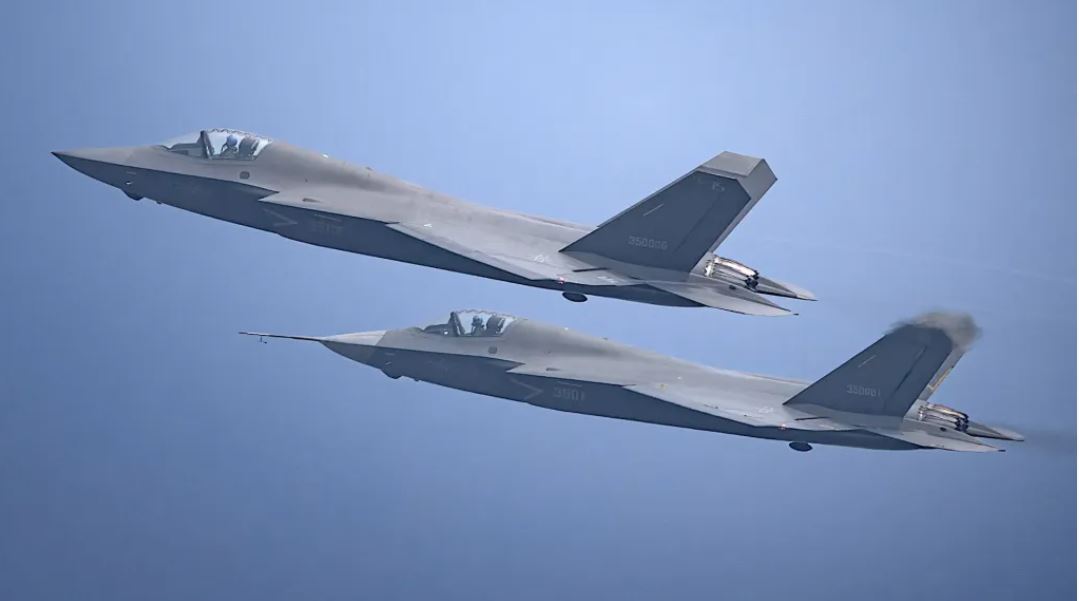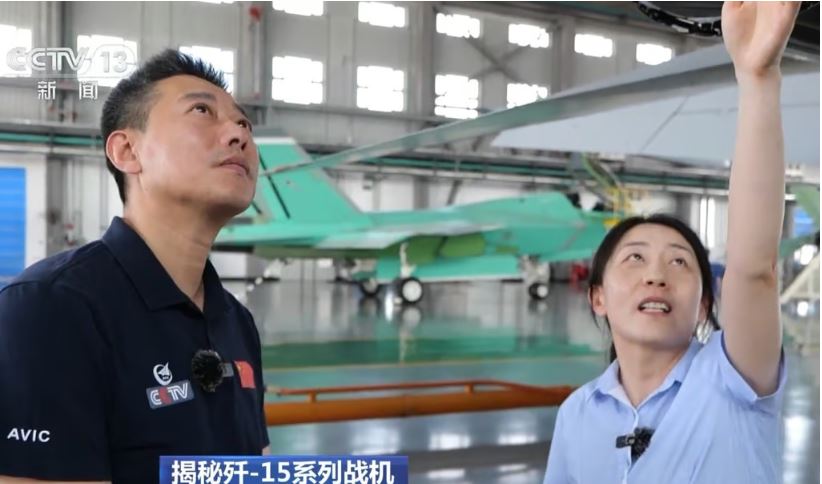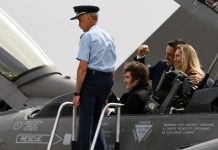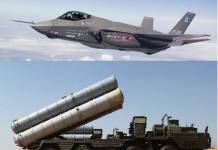After reportedly operationalizing its second land-based stealth fighter jet, the J-35A, China may soon induct its carrier-based variant, the J-35, into service.
Earlier this month, reports emerged that China has operationalized the J-35A, its second fifth-generation combat aircraft. The reports were fueled by the circulation of images showing two J-35A aircraft flying in close formation with J-20, China’s first stealth fighter jet, and the J-16D electronic warfare aircraft.
After the photo of the formidable formation went viral on social media, several other images of the J-35A aircraft (sporting two different serial numbers) were posted by popular PLA military watchers, including China military aviation researcher Andreas Rupprecht.
“Based on this image and its serial number 61821, the J-35A is confirmed in PLAAF service flying within the 1st Air Brigade,” Rupprecht wrote on X. Another image was posted subsequently with the aircraft bearing serial number 61820.
Now, less than three weeks later, another set of images, this time showing two carrier-capable J-35 flying in close formation, have once again gone viral on Weibo, the Chinese equivalent of X.

The rare close-up images of J-35 offer the clearest view yet of China’s next-generation carrier-based aircraft.
According to former People’s Liberation Army instructor Song Zhongping, the markings and flight characteristics offered the most substantial evidence yet that the J-35 had entered production and was approaching operational readiness for deployment aboard China’s latest aircraft carrier.
The images, which went viral on Chinese social media platforms on the weekend, show the jets bearing clear “Chinese navy” markings on their fuselages and “Flying Shark” insignia on their tails, the strongest visual indication yet of their formal integration into the PLA Navy.
The fighter jets carried visual identification numbers of “0011” and “0012,” suggesting they were part of the initial batch of production units.
“The Flying Shark insignia confirms the J-35 has joined the navy’s carrier aviation force. It indicates the aircraft may have been in active service and is building combat and logistical support capabilities,” former PLA instructor Song was quoted as saying by the Hong Kong-based South China Morning Post.
Commenting on the pictures, China military aviation researcher Andreas Rupprecht wrote on social media platform X, “Wow … as it seems, also the PLAN Naval Aviation has finally revealed its first two operational (?) J-35 fighters.”
Additionally, the pilots of the J-35 could be seen wearing blue helmets, which have frequently been seen used by Chinese naval aviators flying the J-15 with frontline units.
All this strongly suggests that the J-35s are either already in service or are scheduled to enter service very soon. The high resolution of the images indicates that the pictures could be an official release by the PLA Navy.
If the reports are accurate, then China would become only the second country in the world to induct two stealth fighter jets, the J-20 Mighty Dragon and the J-35A, and to induct a carrier-capable variant of a stealth aircraft, the J-35.
So far, only the US has two stealth fighter jets, the F-22 Raptor and the F-35 Lightning II. The F-35 also features a carrier-capable variant, known as the F-35C.
The J-35 is widely expected to become the main fighter jet on China’s latest and most advanced aircraft carrier, the Fujian, which is also China’s first carrier featuring electromagnetic catapults. This technology will allow the PLA Navy to launch heavier aircraft with higher payloads. It is also compatible with Liaoning and Shandong carriers.
Notably, the Fujian warship has undergone eight sea trials and is expected to enter service before the end of the year.
It won’t be surprising if the J-35 has already begun trials on the Fujian. However, there are no images yet to prove this.
The J-35 is also intended to replace the aging J-15, a derivative of the Su-33 that Beijing acquired from Ukraine over two decades ago.
J-35: From Zhuhai Airshow To Formal Induction
The J-35A was unveiled to the world for the first time during the Zhuhai Airshow in November last year.
In contrast, there has been no formal unveiling of the carrier-capable J-35. According to reports, the aircraft was first seen in October 2021, with subsequent spottings reported in 2022 and 2023. However, in recent times, the aircraft has been seen testing multiple times.
It has been spotted flying in formations with J-20, J-15 carrier-based fighter jets, as well as early-warning aircraft, during rehearsals for a September 3 military parade in Beijing to mark the 80th anniversary of the end of World War II.
Earlier this month, during a telecast by the state broadcaster CCTV, which showed the J-15T at its production facility, at least two “green-primed” J-35 airframes were also visible in the background.
The green primer layer is a coating applied during the aircraft manufacturing process, before the aircraft receives its final paint. Those images were further proof that the J-35 has entered at least limited production.

At that time, Song Zhongping stated that it was the first time production facilities for the J-35 had been publicly displayed, indicating that the aircraft was in mass production.
However, the images that went viral on the weekend offer the closest view of the J-35 yet.
Even though both the land-based J-35A and the carrier-capable J-35 are based on the Shenyang FC-31 “Gyrfalcon,” there appear to be significant differences between the two, especially in exhaust nozzles and the powerplant.
Commenting on the differences between the two variants, the PLA expert Andreas Rupprecht noted that the “engines or at least exhaust nozzles are totally different.” He added that both aircraft also have different Luneburg lenses.
Furthermore, military observers noted that both the J-35s were flying in close formation, but neither aircraft featured traditional nose-mounted airspeed probes or “pitot tubes”.
The absence of ‘pitot tubes,’ the military observers asserted, was a clear sign that the model had successfully completed its prototype and testing phases, and had entered formal production.
The integration of J-35 on Chinese aircraft carriers will be a significant boost to the capabilities of the PLA Navy in the Pacific theater, where China is embroiled in territorial disputes with multiple countries.
Military observers believe that both the land-based J-35A and the carrier-capable J-35 will be formally inducted into the service ahead of the 80th anniversary of the end of the Second World War. The event will be marked with a military parade in Beijing on September 3.
Multiple new Chinese aircraft, such as the J-35, J-35A, J-15T, and the twin-seat variant of the J-20, the J-20S, have been spotted rehearsing for the parade.
However, irrespective of the formal induction timelines of these aircraft, it cannot be denied that almost all countries in the Indo-Pacific, including India, Japan, the Philippines, and the USA, will be closely watching.
- Sumit Ahlawat has over a decade of experience in news media. He has worked with Press Trust of India, Times Now, Zee News, Economic Times, and Microsoft News. He holds a Master’s Degree in International Media and Modern History from the University of Sheffield, UK.
- VIEWS PERSONAL OF THE AUTHOR.
- He can be reached at ahlawat.sumit85 (at) gmail.com




